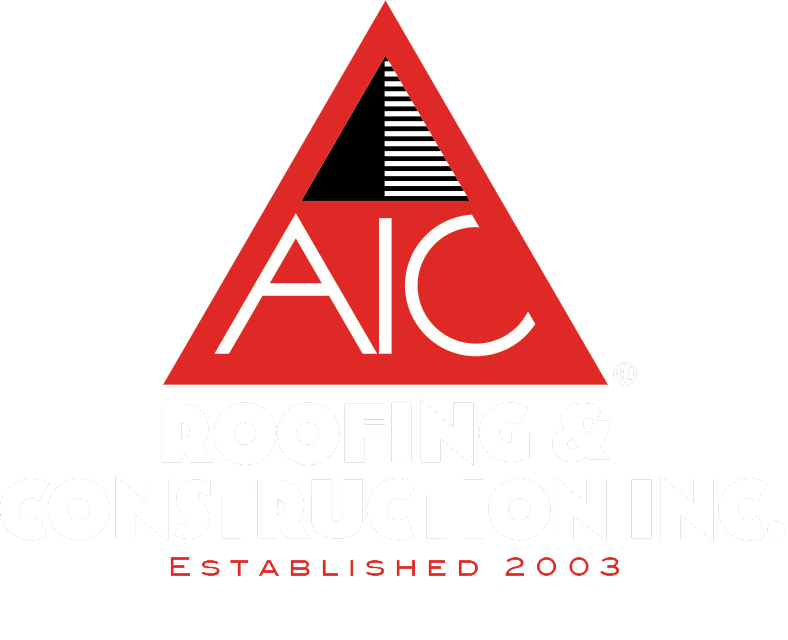If you’re considering a roof replacement, it’s important to understand the various components involved and what the process entails. By familiarizing yourself with the basics, you can make informed decisions and ensure that you receive a comprehensive roof replacement that meets your needs.
At AIC Roofing & Construction, we want homeowners to feel confident and make informed decisions about their roof replacement. We’ve replaced over 10,000 roofs in the Central Kentucky and Cincinnati areas.
In this article, we will explore the different aspects of a roof replacement, from the materials used to the cost factors involved, giving you a thorough understanding of what your roof replacement should include.
Understanding the Basics of Roof Replacement
Roof replacement is not just about aesthetics; it’s about protecting your home and ensuring its longevity. By investing in a well-planned and executed roof replacement, you can safeguard your property from the elements and potentially increase its value.
Types of Roofing Materials
One of the first considerations when planning a roof replacement is the type of roofing material you want to use. There are several options available, each with its own advantages and disadvantages.
For example, asphalt shingles are a popular choice due to their affordability and durability. They come in a variety of styles and colors, making them suitable for different architectural designs. On the other hand, if you’re looking for a more upscale and long-lasting option, you might consider materials like metal or slate.
When selecting the roofing material, it’s important to consider factors such as the climate in your area, the slope of your roof, and the overall aesthetic you want to achieve. Consulting with a roofing professional can help you make an informed decision that aligns with your preferences and budget.
The Role of Roofing Underlayment
While roofing materials are the visible part of a roof replacement, the underlayment plays a crucial role in protecting your home from moisture and leaks. Roofing underlayment is a waterproof barrier that is installed beneath the roofing material.
Common types of underlayment include asphalt-saturated felt and synthetic materials like synthetic underlayment or rubberized asphalt. The underlayment provides an extra layer of protection, preventing water from seeping into your home and causing damage.
During a roof replacement, it’s important to ensure that the underlayment is properly installed and meets the recommended standards, as it forms a crucial part of the overall roofing system. A well-installed underlayment can enhance the lifespan of your roof and provide added peace of mind.
Importance of Proper Insulation
Insulation is another essential component of a roof replacement. Proper insulation helps regulate indoor temperature, reduces energy loss, and enhances overall comfort.
During a roof replacement, it’s an excellent opportunity to check and upgrade your insulation. Adding insulation or improving its quality can lead to significant energy savings and increased home efficiency. It also helps prevent heat transfer and reduces the strain on your HVAC system, ultimately lowering your energy bills.
Consult with your roofing professional to determine the right insulation type and amount based on your climate and home’s needs. They can assess your current insulation and recommend improvements that align with your goals and budget.
Key Components of a Roof Replacement
Now that we’ve explored the basics, let’s delve into the key components involved in a roof replacement. Understanding these components will help you communicate effectively with your roofing contractor and ensure that nothing is overlooked.
When it comes to a roof replacement, one of the most important decisions you’ll make is choosing the right roofing material. Shingles and tiles are two of the most common options, each offering its own unique benefits and aesthetic appeal.
Shingles or Tiles
The roofing material you choose, such as shingles or tiles, will have a significant impact on the overall look and performance of your roof.
Shingles are available in various styles, including architectural shingles, three-tab shingles, and designer shingles. Each type offers a distinct look, durability level, and price range. Architectural shingles, for example, provide a dimensional appearance and enhanced durability, making them a popular choice for homeowners seeking both style and longevity.
On the other hand, tiles, such as clay or concrete tiles, add a unique aesthetic touch to your home. They are known for their longevity and ability to withstand harsh weather conditions. Clay tiles, with their rich earthy tones, can give your home a timeless Mediterranean or Spanish look, while concrete tiles offer a more modern and sleek appearance.
Your roofing contractor will guide you on the best option based on your preferences, budget, and the architecture of your home. They will take into account factors such as the slope of your roof, local climate conditions, and the overall style of your home to help you make an informed decision.
Flashing and Vents
Flashing and vents play a crucial role in preventing leaks and maintaining proper ventilation within your roof. Flashing is installed around areas susceptible to water penetration, such as chimneys, skylights, and roof valleys.
Vents, on the other hand, allow air circulation within the attic, reducing the risk of moisture buildup that can lead to rot and mold growth. Proper ventilation also helps regulate indoor temperature and improve energy efficiency.
During a roof replacement, it’s essential to ensure that existing flashing is in good condition and that proper ventilation is installed or upgraded as needed. Your roofing contractor will carefully inspect the flashing and vents, making any necessary repairs or replacements to ensure the long-term integrity of your roof.
Gutters and Downspouts
While not directly part of the roof structure, gutters and downspouts play a vital role in protecting your home’s foundation and landscaping and are considered part of your roofing system. They collect rainwater and divert it away from the house, preventing water damage and erosion.
During a roof replacement, it’s important to inspect and, if necessary, replace or upgrade your gutters and downspouts. This ensures that the entire roofing system functions optimally and maximizes its lifespan. Your roofing contractor will assess the condition of your gutters and downspouts, recommending any necessary repairs or replacements to ensure proper water drainage and protection for your home.
By considering these key components of a roof replacement, you can make informed decisions and work closely with your roofing contractor to achieve a durable and aesthetically pleasing roof that will protect your home for years to come.
The Roof Replacement Process
Now that we understand the various components involved in a roof replacement, let’s take a closer look at the process itself. While every project is unique, the following steps are generally followed:
Initial Inspection and Estimate
Before beginning any work, a thorough inspection of your existing roof is conducted. This helps identify any underlying issues that may need to be addressed before the replacement can commence. At this stage, you can also discuss your preferences, budget, and any specific concerns with your chosen roofing contractor.
During the inspection, the roofing contractor carefully examines the condition of your roof, looking for signs of damage, leaks, or structural issues. They may use specialized tools and equipment to assess the integrity of the roof and determine the extent of repairs needed. This detailed inspection ensures that all potential problems are identified and addressed, providing a solid foundation for the replacement process.
Based on the inspection, the contractor will provide you with an estimate that outlines the scope of work, materials to be used, and the overall cost of the project. This estimate serves as a roadmap for the roof replacement, giving you a clear understanding of what to expect. If applicable, your roofing contractor will help you navigate the homeowners insurance process.
Removal of Old Roof
Once you’ve agreed on the estimate, the old roof is removed. This involves stripping away the existing roofing materials, inspecting the underlying structure for damage, and making necessary repairs.
The removal process is carefully executed to ensure the safety of both the workers and your property. Roofing professionals use specialized tools and techniques to efficiently remove the old materials without causing any additional damage. They take great care to protect your home’s exterior, landscaping, and surrounding areas from debris.
Removing the old roof allows for a fresh start and ensures that any problems are resolved before installing the new materials. It also provides an opportunity to assess the condition of the underlying structure and make any necessary repairs or reinforcements. This step is crucial in creating a solid foundation for the new roof. In addition, removing the old roof before installing the new roof will ensure the warranty on the new roof remains intact.
Installation of New Roof
Once the old roof is removed and the underlying structure is in good condition, the new roof installation begins. This involves laying the underlayment, ice and water shield, and then the chosen roofing material, such as shingles or tiles.
The installation process is carried out by experienced roofing professionals who are well-versed in the best practices of the industry. They meticulously follow manufacturer guidelines and local building codes to ensure that the new roof is installed correctly and meets all safety and quality standards.
Throughout the installation process, the roofing team pays attention to every detail, from aligning the shingles or tiles to properly sealing the edges and ensuring adequate ventilation. They take pride in their workmanship and strive to create a roof that not only provides reliable protection but also enhances the overall aesthetics of your home.
By following these steps, the roof replacement process ensures that your new roof is not only functional and durable but also visually appealing. It is a comprehensive approach that takes into account the unique needs of your home, providing you with a long-lasting and beautiful roof that you can rely on for years to come.
Roof Replacement in Central Kentucky and Cincinnati
Understanding the basics and key components of a roof replacement empowers you to make informed decisions and ensures that your roof replacement includes everything it should. By working with a reputable roofing contractor and considering factors such as roofing materials, underlayment, insulation, and proper ventilation, you can achieve a durable and long-lasting roof that protects your home for years to come.
AIC Roofing and Construction has served home and business owners across Central and Northern Kentucky since 2003. We are in the top 2% of roofing contractors in North America to obtain the GAF MasterElite certification – something we renew every year as part of our commitment to excellence. If you’re considering a roof replacement or simply need to repair a roof leak, contact us today to schedule a free roof inspection.
3-tab attics barns chimney choosing a contractor commercial cost curb appeal DIY estimate financing flashing flat roof GAF glossary gutter replacement gutters gutter size gutter system ice dams inspections insurance missing shingles roof design roofing materials roofing system roof leak roof maintenance roof materials roof repair roof replacement roof shapes roof types shingle ratings shingles siding siding materials siding replacement skylights storm damage underlayment ventilation warranty winter







